In full Gothic *armour a knight rides purposefully through a rocky ravine (below). His gaze is fixed firmly upon the way ahead, denying himself the distractions that might lie to either side of his chosen path. Under the very hooves of his steed a lizard scuttles to safety. On the stump of a tree lies a human skull, a grim reminder of the folly and illusion of human vanity. A hound, the knight’s faithful companion on his lonely journey, runs alongside.
 The knight is escorted or harrased by two beings: on the knight’s right the figure of Death raises his hourglass (below), reminding the knight that his mortal days are already numbered and noted. Death’s mount, a scrawny nag, wears a bell around its neck: both the bell and the hourglass convey the passing of time. Behind the knight strides the horned and cloven-hoofed Devil, shouldering a pikestaff.
The knight is escorted or harrased by two beings: on the knight’s right the figure of Death raises his hourglass (below), reminding the knight that his mortal days are already numbered and noted. Death’s mount, a scrawny nag, wears a bell around its neck: both the bell and the hourglass convey the passing of time. Behind the knight strides the horned and cloven-hoofed Devil, shouldering a pikestaff.
 In his portrayal of the figure of Death, the artist has avoided the conventional ‘grim reaper’ approach. We see here no skeletal hand clutching a scythe; Dürer’s treatment is more tied to grim reality, and the more compelling for it. On the face the dried skin stretches taughtly away from the bone, exposing the skull beneath. Medusa-like serpents writhe and coil, entwining themselves around the crown of Lord Death, although here their appearance has more of the worms of the grave than of scaled and glittering snakes. The matted and straggling pale hair and beard which frame the terrible face are portrayed with the unflinching conviction of a 16th century observer who had encountered such a face often enough, perhaps beside some infrequently-used country road, and certainly on a gibbet.
In his portrayal of the figure of Death, the artist has avoided the conventional ‘grim reaper’ approach. We see here no skeletal hand clutching a scythe; Dürer’s treatment is more tied to grim reality, and the more compelling for it. On the face the dried skin stretches taughtly away from the bone, exposing the skull beneath. Medusa-like serpents writhe and coil, entwining themselves around the crown of Lord Death, although here their appearance has more of the worms of the grave than of scaled and glittering snakes. The matted and straggling pale hair and beard which frame the terrible face are portrayed with the unflinching conviction of a 16th century observer who had encountered such a face often enough, perhaps beside some infrequently-used country road, and certainly on a gibbet.
 As with Dürer’s depiction of Death, his Devil as well denies us the option of a comfortable way out (above). There is nothing to snigger at here; no hint of capering caricature which allows us reassuringly to say to ourselves, ‘see, he’s not real after all…’. On the contrary, Dürer has forced in front of our gaze a horror so minutely observed in its detail that it presents the impression that it almost could be classified by science. From the bizarre curving horn that arcs above its head to the grotesque drooping wattles which hang beneath its grimacing snout, every changing texture of horn, hair, flesh and fangs has been captured with the same apparent accuracy of observation and fidelity to reality that the artist used to portray the exotic animals which he later encountered in the Antwerp Zoo. Even the rolling-eyed squint seems unnerving rather than comical: is the Devil looking directly at us, or not? When the Devil looks like this, we may hope that his attentions fall elsewhere.
As with Dürer’s depiction of Death, his Devil as well denies us the option of a comfortable way out (above). There is nothing to snigger at here; no hint of capering caricature which allows us reassuringly to say to ourselves, ‘see, he’s not real after all…’. On the contrary, Dürer has forced in front of our gaze a horror so minutely observed in its detail that it presents the impression that it almost could be classified by science. From the bizarre curving horn that arcs above its head to the grotesque drooping wattles which hang beneath its grimacing snout, every changing texture of horn, hair, flesh and fangs has been captured with the same apparent accuracy of observation and fidelity to reality that the artist used to portray the exotic animals which he later encountered in the Antwerp Zoo. Even the rolling-eyed squint seems unnerving rather than comical: is the Devil looking directly at us, or not? When the Devil looks like this, we may hope that his attentions fall elsewhere.
 With the creation of The Knight, Death and the Devil, Dürer’s engraving burin appears almost to have taken on a life of its own, seeming thoroughly at home among this controlled churning of matted hair and metal, of rock and bone and stunted vegetation. The Devil’s crescent horn almost scoops the background wall of rock along with it in a fluid wave of engraved curves. The neck muscles of the knight’s horse seem more sculpted than engraved (above).
With the creation of The Knight, Death and the Devil, Dürer’s engraving burin appears almost to have taken on a life of its own, seeming thoroughly at home among this controlled churning of matted hair and metal, of rock and bone and stunted vegetation. The Devil’s crescent horn almost scoops the background wall of rock along with it in a fluid wave of engraved curves. The neck muscles of the knight’s horse seem more sculpted than engraved (above).
 Dürer's house in Nuremberg was not far from an *armourer's, and the artist would have seen such knights in life. His watercolor study (above) clearly served the artist as a reference for his engraving. Although it has been suggested that the idea of the noble knight had by Dürer's time declined, this is only partly true. Knights always were a *mercenary class, even something of a rabble, and our own ideas of chivalry belong to the pages of romantic fiction.
Dürer's house in Nuremberg was not far from an *armourer's, and the artist would have seen such knights in life. His watercolor study (above) clearly served the artist as a reference for his engraving. Although it has been suggested that the idea of the noble knight had by Dürer's time declined, this is only partly true. Knights always were a *mercenary class, even something of a rabble, and our own ideas of chivalry belong to the pages of romantic fiction.
 The statuesque bearing of the knight’s mount evidently drew its inspiration from Leonardo da Vinci’s sketch (above) of his proposed equestrian statue of Francesco Sforza, the Duke of Milan, which Dürer would have seen on his Italian trip. When Leonardo’s sketch is reversed, as shown here, the similarity to Dürer’s own drawing is readily apparent.
The statuesque bearing of the knight’s mount evidently drew its inspiration from Leonardo da Vinci’s sketch (above) of his proposed equestrian statue of Francesco Sforza, the Duke of Milan, which Dürer would have seen on his Italian trip. When Leonardo’s sketch is reversed, as shown here, the similarity to Dürer’s own drawing is readily apparent.
 The knight is escorted or harrased by two beings: on the knight’s right the figure of Death raises his hourglass (below), reminding the knight that his mortal days are already numbered and noted. Death’s mount, a scrawny nag, wears a bell around its neck: both the bell and the hourglass convey the passing of time. Behind the knight strides the horned and cloven-hoofed Devil, shouldering a pikestaff.
The knight is escorted or harrased by two beings: on the knight’s right the figure of Death raises his hourglass (below), reminding the knight that his mortal days are already numbered and noted. Death’s mount, a scrawny nag, wears a bell around its neck: both the bell and the hourglass convey the passing of time. Behind the knight strides the horned and cloven-hoofed Devil, shouldering a pikestaff. In his portrayal of the figure of Death, the artist has avoided the conventional ‘grim reaper’ approach. We see here no skeletal hand clutching a scythe; Dürer’s treatment is more tied to grim reality, and the more compelling for it. On the face the dried skin stretches taughtly away from the bone, exposing the skull beneath. Medusa-like serpents writhe and coil, entwining themselves around the crown of Lord Death, although here their appearance has more of the worms of the grave than of scaled and glittering snakes. The matted and straggling pale hair and beard which frame the terrible face are portrayed with the unflinching conviction of a 16th century observer who had encountered such a face often enough, perhaps beside some infrequently-used country road, and certainly on a gibbet.
In his portrayal of the figure of Death, the artist has avoided the conventional ‘grim reaper’ approach. We see here no skeletal hand clutching a scythe; Dürer’s treatment is more tied to grim reality, and the more compelling for it. On the face the dried skin stretches taughtly away from the bone, exposing the skull beneath. Medusa-like serpents writhe and coil, entwining themselves around the crown of Lord Death, although here their appearance has more of the worms of the grave than of scaled and glittering snakes. The matted and straggling pale hair and beard which frame the terrible face are portrayed with the unflinching conviction of a 16th century observer who had encountered such a face often enough, perhaps beside some infrequently-used country road, and certainly on a gibbet. As with Dürer’s depiction of Death, his Devil as well denies us the option of a comfortable way out (above). There is nothing to snigger at here; no hint of capering caricature which allows us reassuringly to say to ourselves, ‘see, he’s not real after all…’. On the contrary, Dürer has forced in front of our gaze a horror so minutely observed in its detail that it presents the impression that it almost could be classified by science. From the bizarre curving horn that arcs above its head to the grotesque drooping wattles which hang beneath its grimacing snout, every changing texture of horn, hair, flesh and fangs has been captured with the same apparent accuracy of observation and fidelity to reality that the artist used to portray the exotic animals which he later encountered in the Antwerp Zoo. Even the rolling-eyed squint seems unnerving rather than comical: is the Devil looking directly at us, or not? When the Devil looks like this, we may hope that his attentions fall elsewhere.
As with Dürer’s depiction of Death, his Devil as well denies us the option of a comfortable way out (above). There is nothing to snigger at here; no hint of capering caricature which allows us reassuringly to say to ourselves, ‘see, he’s not real after all…’. On the contrary, Dürer has forced in front of our gaze a horror so minutely observed in its detail that it presents the impression that it almost could be classified by science. From the bizarre curving horn that arcs above its head to the grotesque drooping wattles which hang beneath its grimacing snout, every changing texture of horn, hair, flesh and fangs has been captured with the same apparent accuracy of observation and fidelity to reality that the artist used to portray the exotic animals which he later encountered in the Antwerp Zoo. Even the rolling-eyed squint seems unnerving rather than comical: is the Devil looking directly at us, or not? When the Devil looks like this, we may hope that his attentions fall elsewhere. With the creation of The Knight, Death and the Devil, Dürer’s engraving burin appears almost to have taken on a life of its own, seeming thoroughly at home among this controlled churning of matted hair and metal, of rock and bone and stunted vegetation. The Devil’s crescent horn almost scoops the background wall of rock along with it in a fluid wave of engraved curves. The neck muscles of the knight’s horse seem more sculpted than engraved (above).
With the creation of The Knight, Death and the Devil, Dürer’s engraving burin appears almost to have taken on a life of its own, seeming thoroughly at home among this controlled churning of matted hair and metal, of rock and bone and stunted vegetation. The Devil’s crescent horn almost scoops the background wall of rock along with it in a fluid wave of engraved curves. The neck muscles of the knight’s horse seem more sculpted than engraved (above). Dürer's house in Nuremberg was not far from an *armourer's, and the artist would have seen such knights in life. His watercolor study (above) clearly served the artist as a reference for his engraving. Although it has been suggested that the idea of the noble knight had by Dürer's time declined, this is only partly true. Knights always were a *mercenary class, even something of a rabble, and our own ideas of chivalry belong to the pages of romantic fiction.
Dürer's house in Nuremberg was not far from an *armourer's, and the artist would have seen such knights in life. His watercolor study (above) clearly served the artist as a reference for his engraving. Although it has been suggested that the idea of the noble knight had by Dürer's time declined, this is only partly true. Knights always were a *mercenary class, even something of a rabble, and our own ideas of chivalry belong to the pages of romantic fiction. The statuesque bearing of the knight’s mount evidently drew its inspiration from Leonardo da Vinci’s sketch (above) of his proposed equestrian statue of Francesco Sforza, the Duke of Milan, which Dürer would have seen on his Italian trip. When Leonardo’s sketch is reversed, as shown here, the similarity to Dürer’s own drawing is readily apparent.
The statuesque bearing of the knight’s mount evidently drew its inspiration from Leonardo da Vinci’s sketch (above) of his proposed equestrian statue of Francesco Sforza, the Duke of Milan, which Dürer would have seen on his Italian trip. When Leonardo’s sketch is reversed, as shown here, the similarity to Dürer’s own drawing is readily apparent.
In no work that he produced before or after this were Dürer’s powers in the engraving medium so expressively at one with their subject. It is as if the artist in Dürer sought passionately to embrace the new ideas of the Renaissance which he had encountered in Italy, but something in his Northern soul, recognising it as alien, struggled to assimilate it. The landscape through which this stoic knight journeys, both mental and physical, is wholly Gothic.

Artist: Albrecht Dürer
Work: The Knight, Death and the Devil, 1513
Medium: Engraving
Location: The Art Institute of Chicago; The Fine Arts Museum, San Francisco; Spencer Museum of Art, University of Kansas; Davison Art Center, Wesleyan University; The National Museum of Western Art, Tokyo, and with further prints from the engraved plate in other international museum collections.
Artist: Albrecht Dürer
Work: Study of a knight, 1495
Medium: Watercolor
Location: As yet untraced, but I'm still searching!
*The fluted pattern was as much functional as decorative, and served to give the metal extra strength.
*see my previous post: A Wild Man and a Willing Lady
*Hence the term still currently in use of 'freelance' (literally: a lance freely available for hire). See further my previous post on Sir John Hawkwood: A Knight of Dark Renown.

Artist: Albrecht Dürer
Work: The Knight, Death and the Devil, 1513
Medium: Engraving
Location: The Art Institute of Chicago; The Fine Arts Museum, San Francisco; Spencer Museum of Art, University of Kansas; Davison Art Center, Wesleyan University; The National Museum of Western Art, Tokyo, and with further prints from the engraved plate in other international museum collections.
Artist: Albrecht Dürer
Work: Study of a knight, 1495
Medium: Watercolor
Location: As yet untraced, but I'm still searching!
*The fluted pattern was as much functional as decorative, and served to give the metal extra strength.
*see my previous post: A Wild Man and a Willing Lady
*Hence the term still currently in use of 'freelance' (literally: a lance freely available for hire). See further my previous post on Sir John Hawkwood: A Knight of Dark Renown.



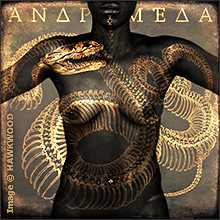
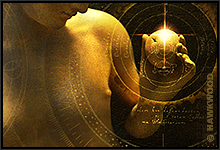




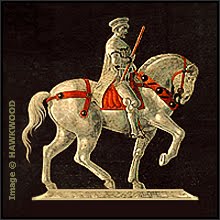
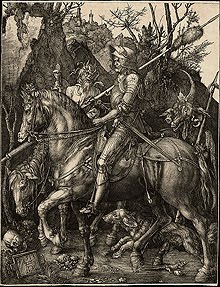
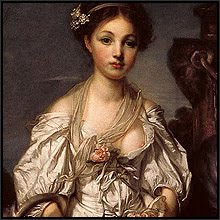










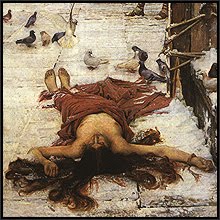

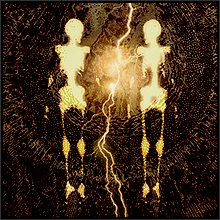
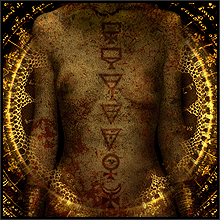
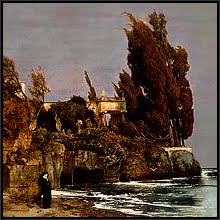
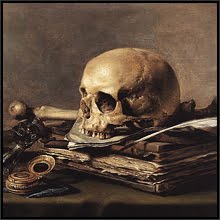
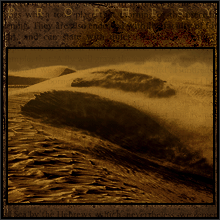

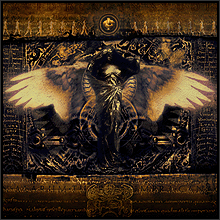

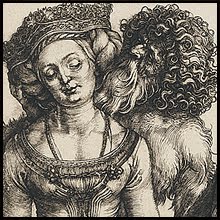
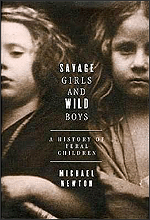

This is what I would call an epic, such story, so much poetry in one piece of art.
ReplyDeleteYour interpretation, as fantastic as always.
Must thank you for the education I receive.
Warmest Regards,
Thank you so much, Lolita. This happens to be pretty much my favorite work of art (along with another Dürer work, his 'Melancholia'), which also is why I used it for my blog header. The stoic knight's example, riding steadfastly onward, has helped me through many a dark night. I'm very pleased that you so appreciated it.
ReplyDeleteI agree wholeheartedly that the piece is powerful, and unimaginably skillful, but I'm not sure I have any sensible idea of what Durer intended viewers to interpret the relationship between the knight, death and the devil to be.
ReplyDeleteThe smile on the knight's face is not (to my eye) stoic, or even the sort of smile which might signify bravery in the face of adversity, - it is, bizarrely, quite a smug smile. While the Knight's horse and armour are almost idealised in their perfection, the Knight's face is utterly unglamourous; - it is a strong but fairly craggy and lived-in face,- neither particularly handsome or noble in its features. Death, while fearsome, does not lear at the knight, - he leans his head almost almost in deference . Nor does the devil overty threaten the knight. The Devil bears a pikestaff which, while again fearsome, is also probably what the footsolders in a free company of the times would probably weild; i.e. is the devil meant to be a threatening figure, or rather is he meant to be the knight's companion and/or follower? Is Death's upraised hourglass meant to symbolise the Knight's time running out, or is Death holding it up to urge the Knight on to the battlefield? - i.e. "Hurry up, there is killing for you to do and you're running late".
I have no idea, and I have no particular strength of conviction either way, but you've got to love Durer.
You make some very intriguing comments, Egrove. There always will be room for individual interpretation, of course. But perhaps it is useful to see this engraving within the context of Dürer's other work. In Melencolia Dürer again used the hourglass to indicate time running out, and the allegorical language of the age would have recognised Dürer's own symbolic language. 'Be stalwart in the face of Death, and put the Devil behind you', might be a good way of summing up these 16th century attitudes.
ReplyDeleteI appreciate your interest, and totally agree: you've got to love Dürer!
I miss those attitudes... =)
ReplyDeleteI am coming into this late, but I to am mesmerized by the etching. I have ordered two larger prints. It is instructive for combat veterans and particularly Christian combat veterans that have had their faith shaken by horrible events. As this etching coincides with the start of the Renaissance, it provides a vision of individual courage against the anxieties of death and despair.
ReplyDeleteThank you for your comment, Mike - and I assure you that there's no such thing as 'late' on this blog! It says much for the power of this engraving that it continues to inspire faith after five centuries.
ReplyDeleteHi,
ReplyDeletei like this drawing very much. I think similar like Mike. It's instructive and impressing! I have different interpretations. I think it represent the ideal of the noble knight which, i belive, never existed in the first place. Well, as we all know, a knights faith is to fight and fight and fight during his whole life. He fight and death and devil is a permanetly 'comerade' on his side! The knight doesn't like that, but its his faith. He can die in every next battle! He knows it, but still go into combat. Possibly he goes into battle, because his emperor called him, and as loyal he is, he is coming. He is wearing his amory. The hourglass is a reminder of the ending of human life in general or maybe it means the last of hour of the knight is coming. But the knight is not impressed, but do his duty untill the end. But that doesn't mean he is without feat. The face is neither bitterness, neither resignation. It's an ordinary face of an man between 60 and 70 years in my opnion. He struggle with both. The death in front and the devel in his neck.
Another interpretation is also for noncombat veterans, for civilians, yes for everybody. Like i said, the role model of a knight is somebody who fight for weaker people and against injustice. But most knights in the middle ages weren't like said. Only a few. Like today. I name some examples from a german book about knights. Knightley is who is strong and willing to serve. Who is in inwardly free, bravefull and self-confident. And who doenst missues his characteristics for a bad thing, but for a good thing. And who is ready to help and on the way, where weak people need help, also it means his own death, like Dürers knight. Some Americasn may would think now, like an us-soldier. But knightley were e.g GSG9-people when they liberated the Lufthansa machine Landshut or a blaster who risks his life when deactivation a bomb, which is seldom, but happend here in germany. Or a firefighter. Or a boss who doesn't gets crazy and shout with every mistake a worker makes, but ask why the worker mades the mistake in calm way and what the worker can do, that he wont repeat the same mistake and reduces mistakes on the long run, who still treats the worker with respect. Who also metniod what the worker made well. Or passangers who helps a chairbounded person with a tricky barrier. Or a student who is 2 meteres high and has muscles like a bull, helps a classmate who gets beated. And so on. The knight may represnet a true friend, which are rare.
The devil can stand aswell for lies, intrigues, grudge, greed, bashing, the evil, which the knight fight against.
The dog may reminds, that the knight hasnt much loyal friends, only his horse and dog, which he can trust, and go with him everywhere, aswell in battle.
The last interpretation can be if you are serious ill, it's good to fight and not to give. But without the illusion that you live forever. Like "all live is fight" or like a german saying "Who fights can lose, who doesn't fight has already lost"
But the drawing doesnt remind, that the knight can be abused from the state aswell and neither remind, that not everybody may want his help.
The last point is, if combat vetreans went through horrible events and are may now invalids and look and this drawing, the knight hasnt lost any extremities. Well, i would refer then to the german knight Götz von Berlichingen, who really lived, but wasn't a ideal noble knight...but imagine he was and combine that with the drawing, maybe that helped :)
http://en.wikipedia.org/wiki/G%C3%B6tz_von_Berlichingen
P.S. sorry for my english, i am german :P
Thank you so much for such an appreciated and in-depth comment, Chris - and my apologies to you for first having overlooked it. You really have offered some very good insights, both into Dürer's engraving and into the condition of what it means to be a knight. Yes, you are right: the 'noble' knight was largely an invention of romantic fiction. Knights were in reality mostly hired mercenaries with few scruples about true loyalty and the codes of honour which we like to imagine they possessed.
ReplyDeleteDürer was familiar with knights in his everyday world, and would have known these things. So, as you suggest, what he wished more to convey were the principles of how each one of us faces what life deals out to us. In this sense, Dürer's knight has more in common with the ethics of a feudal samurai. In Tsunetomo Yamamoto's 18th-century 'Way of the Samurai', we read: "Each day, without fail, one should consider oneself as dead." This is not a statement of indifference or of bleak pessimism, but rather of complete acceptance of inevitable realities. The knight in the engraving shows no horror of Death riding at his side, just a calm acceptance of what he knows one day must be.
And like the old man's struggles with the great fish in Hemingway's story 'The Old Man and the Sea', it's not about the end result, which in any case is inevitable, but about how we acquit ourselves in the struggle. And Dürer's knight is a wonderful expression of these ideas. Thank you again for such a worthwhile comment - and your English is excellent!
excatly what you said what i think dürer meant. and it is even more dramatic if you believe the saying "you live only just one time". look at the face of the dog. if you have a dog you know a dog can be angry or happy or tired or borin etc. this dog seems to have a serious face. i would say no dog would have a face like this in reality. almost a human face, so deadly serious. and if you waht closer your see a finger of the devil, maybe close of touching the back of the knight. And the worms of detah, especially the heads look more like vultures tha snakes.
DeleteI have to say, if i look onto the engraving i remember the knigts of the metropplitan of arts with their shiney armory.
The lasst point i want say say, the romantic fiction of the medieval knights is the ideal of a everyone human beeing shoud be. yes it is the dream which give the knights of a better homo sapies, how every individual should act. the dream of a better human.
but back to reality. there were some people of 9/11 who helped on this day, without thinking about else, than just help victims. they breath a lot of toxic smoke and struggle to get money from the insurance, beaucse they are serouis ill. today a lot of them wouldnt help again. who can blame them?
oh and by the way. the orinal tile isnt the knight the death and the devil, but it is just "the rider"
DeleteJust to clarify: I've seen the original title translated as 'The Rider' in several sources, but the actual German is: 'Der Ritter', which translates, not as 'The Rider', but as 'The Knight'.
DeleteGorgeous art. Such detail.
ReplyDeleteI'm afraid I'm not very good at reading the symbolism in art though I find it fascinating.
Thank you for my art lessons David. I learn so much. You always interpret things in a way that's very easy for me to understand.
Thank you so much for your appreciation, LeeAnne. On the one hand, I think of symbolism as a kind of language which can be learned like any other language. On the other hand, I think it's also true that we can just let the image speak to us directly. We don't always need to 'understand' everything we look at - we can just 'feel' it! Trust your feelings!
Delete